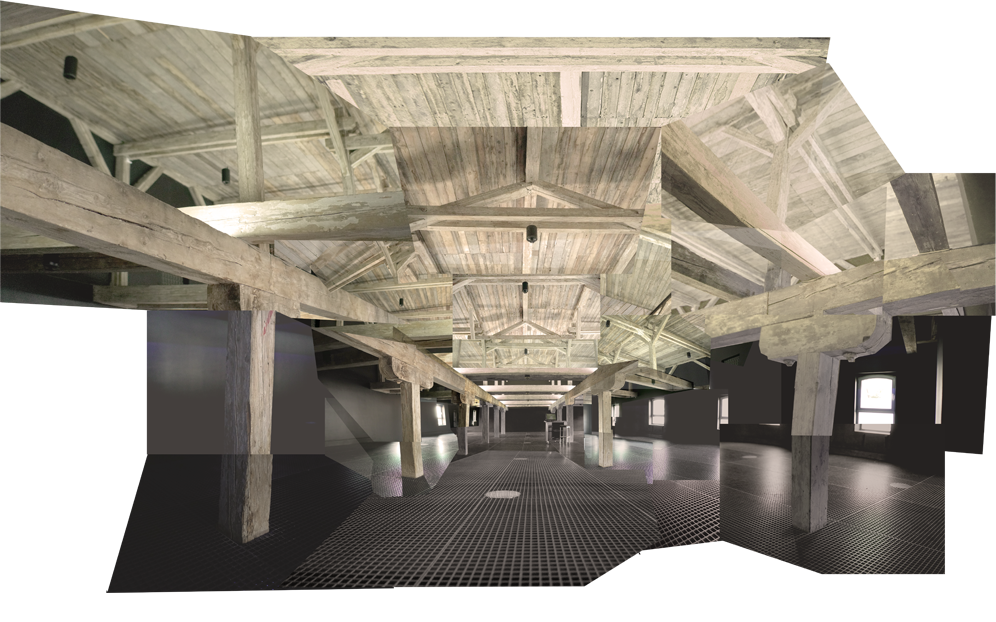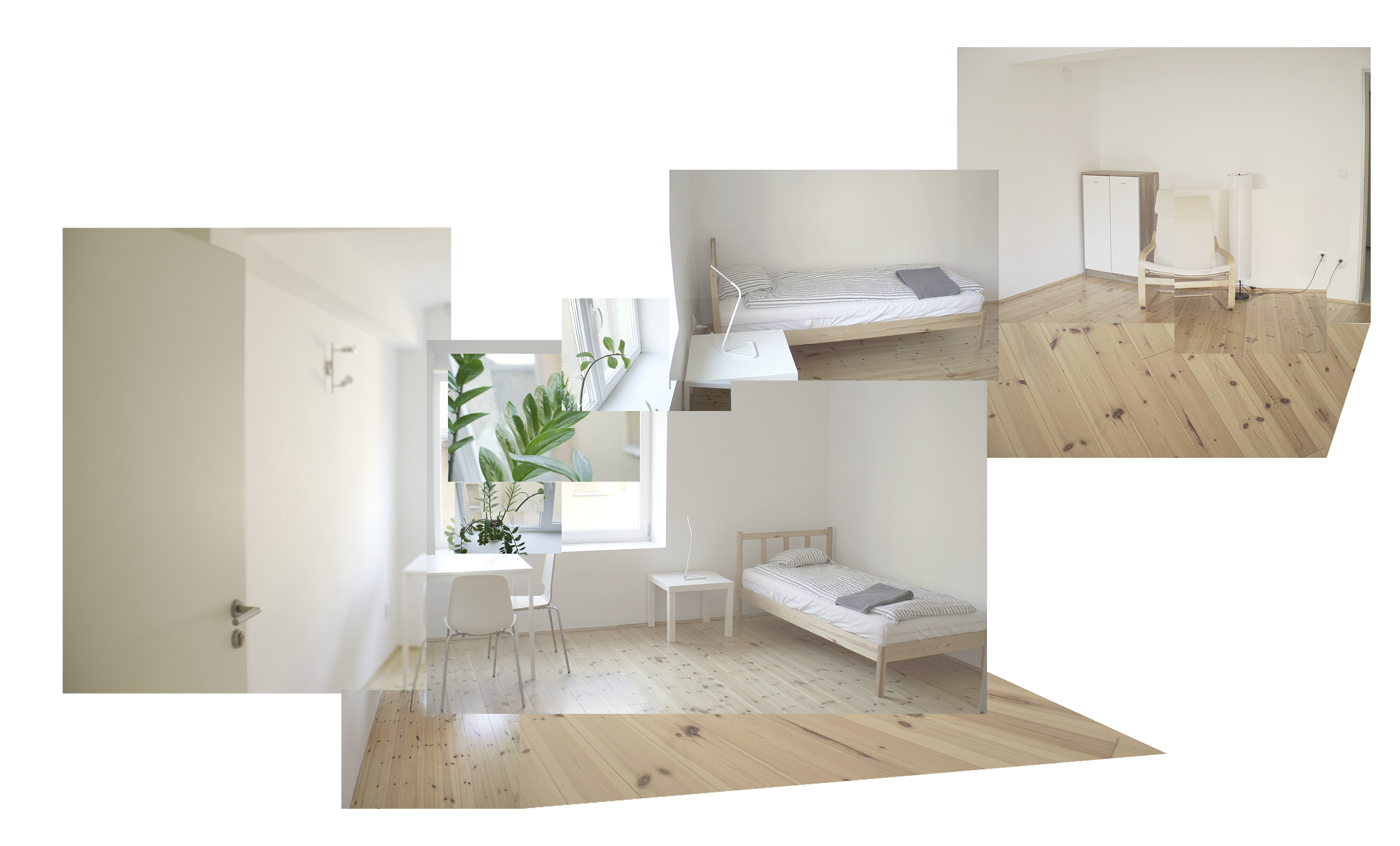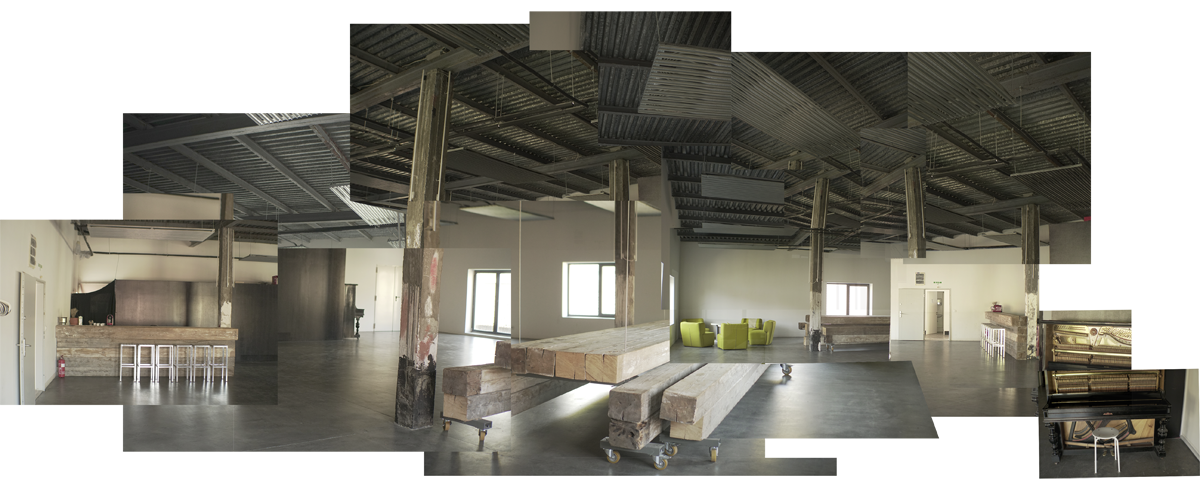Facilities
Spatial Sound
Studio
The central studio of the Spatial Sound Institute houses a large-scale omnidirectional sound system designed by 4DSOUND, custom-built into the renovated architecture of the warehouse. Throughout the studio space - spanning up to 10m high and 300sqm wide - are installed 36 omnidirectional speakers floating from the ceiling, above head-height and underneath an acoustically transparent platform, suspended 3m above the floor. In addition, it has 6 omnidirectional subwoofers and 18 tactile vibro-acoustic transducers.
The unique acoustical design of the studio provides an environment where sounds can move around, above and beneath, hover in the far distance or come intimately close to the body. Encouraged to explore the space, listeners can freely move through a physical environment of sounds.
The studio runs on 4DSOUND software that can be accessed through a set of Max4Live devices in Ableton Live and controlled with an iPad using custom patches in Lemur. A range of sensory platforms is integrated with the 4DSOUND system including haptic feedback, gesture- and motion control systems, bio-wearable media, mixed reality and location tracking that can be used to interface with the sonic space.
︎ Full list of technical equipment at SSI

Artist Residencies
Participants of our Artist Residency Programme are provided to live and work at the Institute during their stay in comfortably furnished rooms. The rooms are 25 sqm each and connected by a shared living room, kitchen, showers and bathrooms.
Daily a delicious two-course vegan lunch is provided for the residents by our in-house chef Szilvia Toth as well as a variation of sourdough breads baked by Janos at PékEmber, the in-house bakery. Eating together takes up an important part in the collective life at the Institute, the daily moment for exchange of ideas and lively conversations that spark across the table.


Library
The Spatial Sound Institute Library is set up with the aim to consolidate research on sound studies and sound-based pedagogy from all over the world. Our curated selection is an ongoing effort to incorporate a variety of literary formats meant to inspire readers and provide reflection on our definition of the Ecology of Listening
Art Quarter Budapest
The Spatial Sound Institute is housed inside the interdisciplinary arts complex Art Quarter Budapest, a 6-story reclaimed warehouse overlooking the Danube in the old wine-producing southern region of Budapest. Participants of our programmes can use the buildings and public spaces across the entire AQB complex, including project spaces and a roof terrace.
Whilst staying at the Spatial Sound Institute and AQB, residents have the opportunity to meet and spend time with a diverse range of international artists from different backgrounds. Every month there are open workshops, talks and presentations at the facility. Residents can also enjoy regularly organised dinners, gatherings, and trips into Budapest just 15 minutes away by train, along with tours of the local wineries and sights in the neighbourhood.
Free WIFI is available throughout the AQB buildings.

About the Surroundings
Budapest : The Hungarian capital is in Central-Eastern Europe, at the middle section of River Danube. The country has been a member of the EU since 2004. The closest neighbouring capitals are Vienna (Austria) and Bratislava (Slovakia) – both about 220 km from Budapest. Budapest is an international city in the heart of Europe with 2 million inhabitants, and has been a cultural and political centre of the region for centuries. Based on its geographical position it is a gateway between East- and West-Europe, between the Balkans and the center of Europe.
Cultural Background : Budapest has a rich cultural history and has always been a place inhabited with the spirit of invention and experimentation. Among many things, Budapest was the birthplace of some legendary figures of the influential architectural movement Bauhaus, as well as the place where Nikola Tesla invented the principle of rotating magnetic fields, which has has provided the world with the wonders of electricity. An active underground art scene existed here during the Communist era, and after the fall of the wall, a dynamic international art community has been steadily emerging up until today.
Cultural Background : Budapest has a rich cultural history and has always been a place inhabited with the spirit of invention and experimentation. Among many things, Budapest was the birthplace of some legendary figures of the influential architectural movement Bauhaus, as well as the place where Nikola Tesla invented the principle of rotating magnetic fields, which has has provided the world with the wonders of electricity. An active underground art scene existed here during the Communist era, and after the fall of the wall, a dynamic international art community has been steadily emerging up until today.
Environment : The Institute is located in the area of Budafok, an old wine-producing region in southern Budapest. The banks of the river Danube can be reached from the Complex within a 5-minute walk. There are several restaurants and fast food outlets by the riverside and in the neighbourhood, and there are low-price grocery stores in the area. One of Budapest's largest shopping malls with numerous shops, restaurants, petrol station etc. is about 2 km from AQB.
Art Quarter Budapest : A former brewery built in 1860 in the area of Budafok, it was revitalised ten years ago as an interdisciplinary art and research centre hosting studios and residencies to support artists in developing and showcasing their work. The large AQB properties near the river Danube provide a unique setting to the Artist Residency programme. They create an atmosphere in which artists can concentrate on their own work, while they can also integrate into Budapest’s lively contemporary art scene.
Art Quarter Budapest : A former brewery built in 1860 in the area of Budafok, it was revitalised ten years ago as an interdisciplinary art and research centre hosting studios and residencies to support artists in developing and showcasing their work. The large AQB properties near the river Danube provide a unique setting to the Artist Residency programme. They create an atmosphere in which artists can concentrate on their own work, while they can also integrate into Budapest’s lively contemporary art scene.

Getting To The Institute
The Spatial Sound Institute is 8 km from the city centre. The Budapest Public transport system is comfortable and efficient.
The Háros train station, which takes you to the central station (Budapest-Déli) in 15 minutes, is within walking distance from the Institute. There are several bus lines (including night bus services) running very close to the venue.
Cycling to and from the Institute is fast and comfortable on the bike routes along the Danube river.
Free parking places are available at our central building, and AQB offers cars and bikes for residents to rent at reasonable prices.
Cycling to and from the Institute is fast and comfortable on the bike routes along the Danube river.
Free parking places are available at our central building, and AQB offers cars and bikes for residents to rent at reasonable prices.
Plane : Budapest has an international airport with daily connections to a large number of destinations in Europe and overseas. It is also a destination of several low-cost airlines.
Railway : Hungary is well-connected by railway. There are fast connections, among others, to Vienna, Berlin, Prague and Munich, and to all the neighbouring countries.
Car : The Hungarian motorway network provides comfortable connection to most of the neighbouring countries, including Austria, Slovenia, Slovakia and Romania.
Railway : Hungary is well-connected by railway. There are fast connections, among others, to Vienna, Berlin, Prague and Munich, and to all the neighbouring countries.
Car : The Hungarian motorway network provides comfortable connection to most of the neighbouring countries, including Austria, Slovenia, Slovakia and Romania.